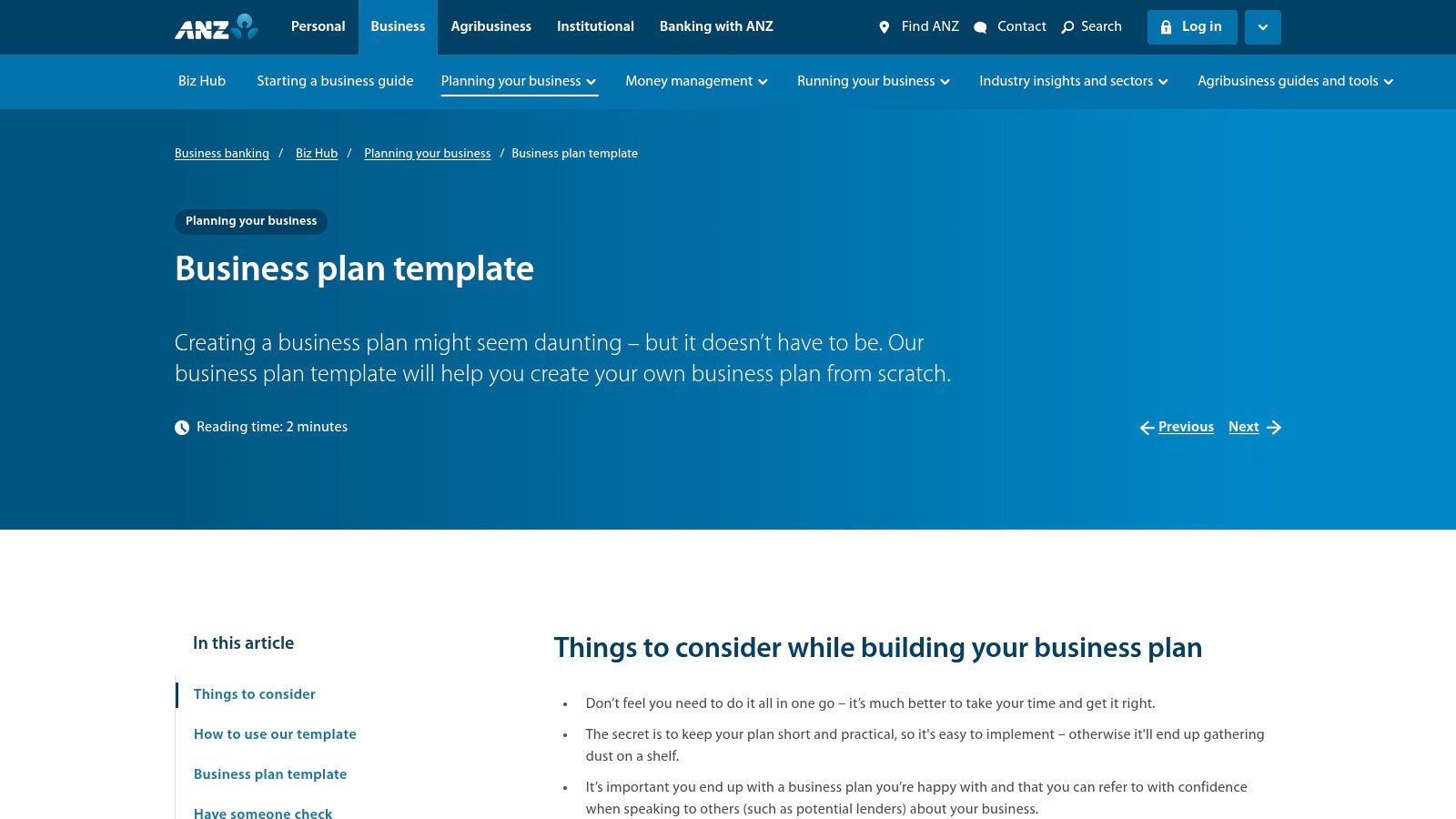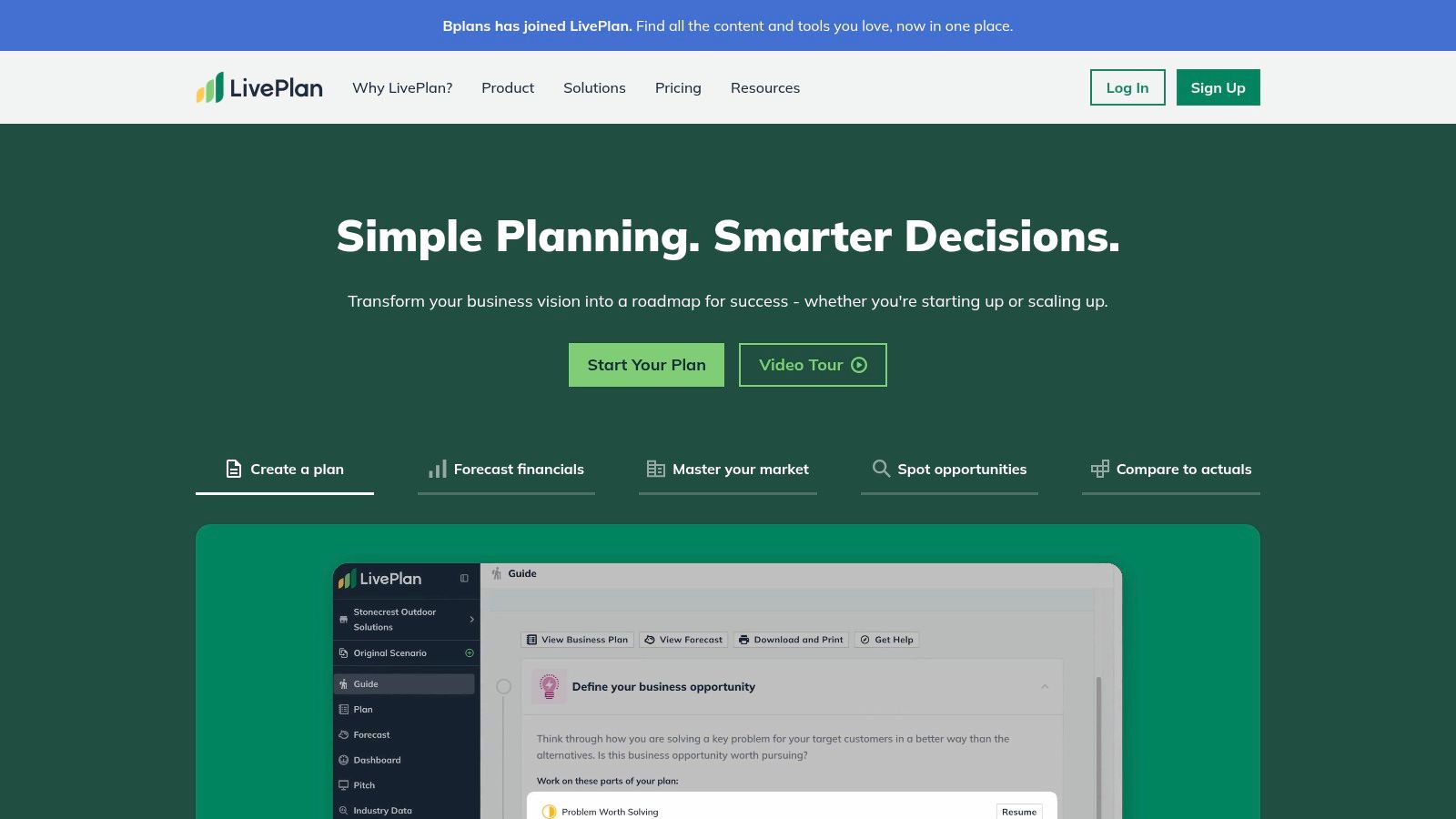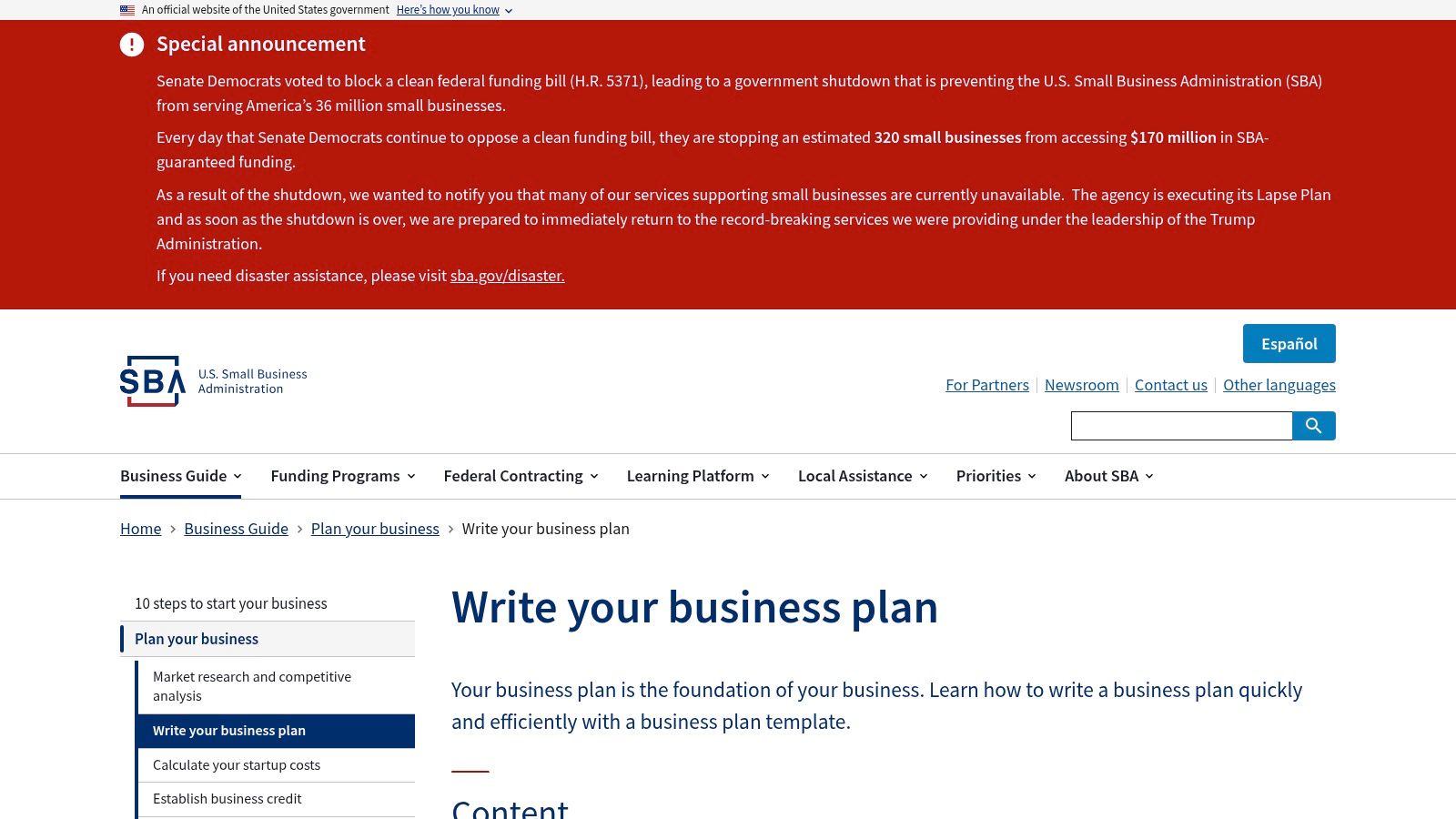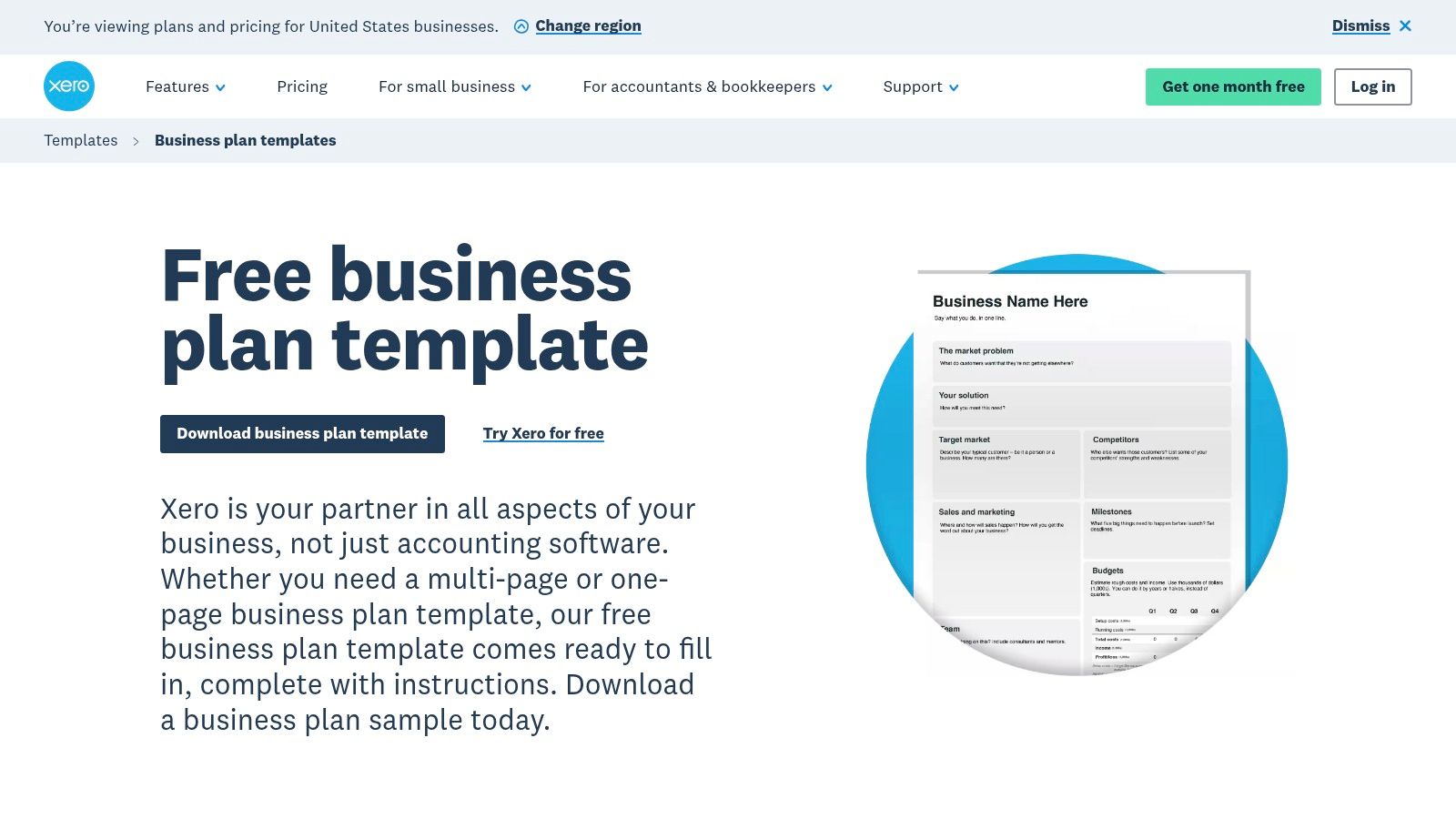
7 Top Sample Business Plan Examples for Kiwis in 2025
Starting a new venture in New Zealand is an exciting journey, but a great idea needs a solid roadmap to become a successful business. A well-crafted business plan is your most critical tool. It clarifies your strategy, helps secure funding, and guides your decisions from day one.
But staring at a blank page can be daunting. Where do you find reliable, relevant examples to get you started? The challenge isn't just finding a template; it's about understanding the strategic thinking behind a successful plan. We've curated a definitive list of the best sample business plan examples, with a special focus on resources tailored for the unique Aotearoa market.
This guide moves beyond generic templates to provide a strategic breakdown of plans for diverse New Zealand sectors, from farm diversification and pet services to photography and creative side hustles. We'll analyse what makes each example effective and provide actionable takeaways you can apply directly to your own venture. For those specifically embarking on an online venture, a comprehensive resource such as this can provide a structured approach with a free e-commerce business plan template.
Each entry in our list includes screenshots, direct links, and a deep dive into its strengths, helping you find the perfect model for your business. Let's explore the tools that will help you build a plan for long-term success.
1. Business.govt.nz (New Zealand Government)
For Kiwi entrepreneurs at the starting line, the official New Zealand Government portal, Business.govt.nz, is the most logical and reliable first stop. It offers a foundational toolkit designed specifically for the Aotearoa business landscape, removing the guesswork of adapting international templates to local requirements. This platform is less about providing filled-in sample business plan examples and more about equipping you with the official, lender-approved framework to build your own from scratch.

The user experience is clean, accessible, and free from commercial clutter. Navigating the site is straightforward, leading you directly to the tools you need without requiring a login or subscription. This government-backed resource is an essential starting point for anyone serious about creating a plan that will be recognised by New Zealand banks, investors, and government agencies.
Strategic Analysis and Key Features
The primary strength of Business.govt.nz lies in its authority and local context. The templates and guides are aligned with the expectations of NZ financial institutions and incorporate local business terminology.
- One-Page Business Plan: An excellent tool for brainstorming and clarifying your core concept before diving into a comprehensive document. It forces you to be concise about your value proposition, target market, and key financials.
- Comprehensive Template (DOCX): A detailed, downloadable Word document that walks you through every essential section, from the executive summary to financial projections. Each section includes prompts and plain-English explanations.
- E-Learning Video Series: Short, digestible videos that break down each component of the business plan. This is perfect for visual learners or those who find dense documents intimidating.
- Integrated NZ Data: The site provides direct links to crucial local resources like Stats NZ, which is vital for gathering accurate market research and demographic data to support your plan.
Actionable Takeaways for NZ Entrepreneurs
To maximise this free resource, start with the one-page plan to distil your ideas. Use this high-level summary to guide your work on the more detailed template. As you progress, watch the corresponding e-learning video for each section to ensure you fully understand its purpose.
Pro Tip: When working on the financial section, use the provided links to explore NZ-specific data. A plan backed by credible, local statistics from sources like Stats NZ will carry significantly more weight with potential lenders and investors than one using generic or international data.
While the templates are generic by design, you can learn more about how to structure and flesh out your document by exploring our guide on how to develop a business plan. This can help you add the industry-specific detail needed to make your plan truly compelling.
Access: Completely free, with no signup required.
Website: https://www.business.govt.nz/strategy-and-performance/creating-a-business-plan/how-to-write-a-business-plan
2. ANZ Biz Hub (ANZ Bank, New Zealand)
For entrepreneurs preparing to seek funding, the ANZ Biz Hub offers a crucial perspective: the lender's. This free resource from one of New Zealand’s major banks provides a business plan framework tailored to meet the expectations of financial institutions. It strips away abstract theory and focuses on the practical, financial, and strategic information a bank needs to see before approving a business loan. The platform is designed to get you "loan-ready" from day one.

The user experience is clean and professional, mirroring ANZ's main banking site. All tools and templates are directly accessible without requiring you to be a customer or create an account. While it offers fewer comprehensive sample business plan examples compared to educational platforms, its value lies in providing a direct look into a lender’s assessment criteria, helping you build a plan that speaks their language.
Strategic Analysis and Key Features
The primary advantage of the ANZ Biz Hub is its alignment with the commercial lending process. The resources are built to answer the questions that loan officers will ask, making it an invaluable tool for anyone looking to secure external financing.
- Bank-Oriented Template (PDF): The downloadable template is structured around key risk and viability metrics that banks prioritise, such as your financial position, market understanding, and repayment capability.
- Integrated Financial Calculators: The hub includes practical tools like a cash flow forecast and break-even calculator. These help you generate the specific financial figures required for the template, ensuring your numbers are sound.
- Companion "How-To" Guides: Simple, jargon-free articles accompany the template, explaining the purpose of each section and offering tips on how to present your information clearly and convincingly.
- Focus on Financial Viability: Unlike more general templates, ANZ's resource heavily emphasises financial projections, cash flow management, and demonstrating a clear path to profitability.
Actionable Takeaways for NZ Entrepreneurs
Use this resource specifically when your goal is to secure a business loan. The language and structure are optimised for that conversation. Start by completing the downloadable PDF template, using the online calculators to populate the financial sections accurately.
Pro Tip: Before your meeting with a bank manager, review your completed plan against ANZ's companion articles. Ask yourself: "Does my plan clearly answer the questions posed in these guides?" This self-audit can help you identify weaknesses in your proposal before you present it.
While the ANZ template provides the right structure for a funding application, it's just one part of the journey. For a broader overview of all the steps involved, from registration to launch, you can learn more about how to start a small business in NZ. This will help you place the business plan within your overall start-up checklist.
Access: Completely free, with no login or ANZ account required.
Website: https://www.anz.co.nz/business/bizhub/planning-your-business/business-plan-template/
3. Bplans (by Palo Alto Software)
For entrepreneurs looking for inspiration and structure, Bplans hosts one of the largest and most diverse free libraries of sample business plan examples on the web. As a global authority, this platform is an invaluable resource for seeing how a finished plan looks and feels across countless industries, from a local coffee shop to a tech start-up. While its core templates are US-centric, the sheer volume of examples makes it a goldmine for understanding narrative flow, financial presentation, and strategic language.

The platform is clean and relatively easy to navigate, though be aware that some content and prompts are designed to funnel users toward their paid software, LivePlan. Despite this, the free library of plans and articles remains a standout feature. It allows you to search for plans in your specific niche, providing a tangible reference point that can demystify the writing process and help you visualise your own document.
Strategic Analysis and Key Features
Bplans’ primary advantage is the depth and variety of its content. Seeing real-world examples helps bridge the gap between abstract instructions and a concrete, compelling document. The platform excels at showing, not just telling.
- 550+ Sample Plans: An extensive library covering nearly every conceivable industry. You can find examples for pet services, cafes, consulting firms, and online retailers, allowing you to see industry-specific language and financial models.
- Free Downloadable Templates: Beyond the full samples, Bplans offers basic, lender-friendly templates in Word and PDF formats that provide a solid structural foundation to build upon.
- Extensive How-To Articles: The site includes a vast collection of articles and guides that break down complex topics like financial forecasting, market analysis, and defining your target audience.
- Industry-Specific Guidance: Many sample plans are accompanied by analysis and articles that explain the key success factors and challenges for that particular sector.
Actionable Takeaways for NZ Entrepreneurs
Your goal when using Bplans should be to gather ideas, not to copy and paste. Search for a business plan in an industry similar to yours and focus on its structure, tone, and the way it presents data. Pay close attention to the executive summary and the financial projections to understand how they tell a cohesive story.
Pro Tip: Ignore the US-specific details like SBA loans, tax codes, and legal structures (e.g., LLC, S-Corp). Instead, concentrate on the universally applicable sections: the mission statement, marketing strategy, operations plan, and management team bios. Use these as a model for your own content, which you will then tailor to New Zealand's regulatory environment.
The templates and examples provide an excellent starting point, but developing the business acumen to fill them out effectively is crucial. To build those foundational skills, you can explore the practical online courses in our business category, designed to enhance your strategic thinking.
Access: Free access to the sample plan library and articles; some features promote paid software.
Website: https://www.bplans.com/downloads/
4. LivePlan (business-planning software)
For entrepreneurs who prefer a guided, software-driven approach, LivePlan is a powerful international platform that transforms business planning from a static document into a dynamic management tool. It moves beyond simple templates by providing a step-by-step process powered by a vast library of over 550 sample business plan examples. This allows you to find a plan from a similar industry, see how it's structured, and use it as a robust framework for your own venture.

The platform's interface is modern and intuitive, breaking down the complex process of writing a plan into manageable, bite-sized tasks. While it is a paid subscription service, its strength lies in creating polished, investor-ready documents and providing ongoing performance tracking tools that remain useful long after your business has launched. For Kiwi businesses aiming to secure significant funding, the professional output and deep financial modelling can be a worthwhile investment.
Strategic Analysis and Key Features
LivePlan’s key advantage is its integration of sample plans with powerful financial forecasting and real-time performance dashboards. This turns your business plan into a living document for managing growth, not just a one-off for securing a loan.
- 550+ Sample Plans: This extensive library covers nearly every industry imaginable, from cafes and retail stores to tech startups and agricultural businesses. You can borrow language, structure, and financial benchmarks to accelerate your writing process.
- Guided Financial Forecasting: The software eliminates the need for complex spreadsheet skills. You simply input your numbers, and it automatically generates professional profit and loss statements, cash flow forecasts, and balance sheets.
- Xero & QuickBooks Integration: A significant benefit for NZ businesses, the ability to connect directly with Xero means you can compare your financial forecasts against your actual performance, providing invaluable real-time insights.
- Pitch & Dashboard Features: LivePlan helps you create a concise, visually appealing one-page pitch for investors and provides a dashboard to track key metrics against your goals once you are operational.
Actionable Takeaways for NZ Entrepreneurs
To get the most value from LivePlan, start by browsing its library of sample business plan examples to find one that closely matches your Kiwi enterprise. Use this as inspiration for your structure and tone. Focus your initial effort on the financial forecasting tools; the ‘what-if’ scenario analysis is perfect for stress-testing your assumptions about the NZ market.
Pro Tip: Leverage the Xero integration from day one. By connecting your accounting software, you can immediately track your actual revenue and expenses against the forecasts in your business plan. This allows you to pivot your strategy quickly if you're not hitting your targets.
While LivePlan is a powerful tool, it's most effective when you've already clarified your core business idea. For help with the foundational strategy before you commit to a subscription, consider using our resources to define your business model. This ensures you're building on a solid strategic base.
Access: Paid subscription model, with monthly and annual options. A 35-day money-back guarantee is offered.
Website: https://www.liveplan.com/pricing
5. U.S. Small Business Administration (SBA) – Sample Plans
For entrepreneurs wanting to see what a finished, lender-ready business plan looks like, the U.S. Small Business Administration (SBA) is an invaluable international resource. While its primary audience is American, the SBA offers high-quality, fully completed sample business plan examples that demonstrate the depth and narrative required to secure funding. This makes it an exceptional learning tool for Kiwis who want to understand the structure and language that investors and banks expect, even if the specific details need localising.

The website is clean, authoritative, and easy to navigate, with direct download links for its sample plans without any registration required. The value here isn’t in a template to fill out, but in the comprehensive examples you can deconstruct. By studying how the SBA’s sample companies articulate their mission, market analysis, and financial projections, you gain a powerful blueprint for your own document.
Strategic Analysis and Key Features
The core strength of the SBA’s offering is its demonstrative power. You get to see a complete, cohesive story from executive summary to appendix, which is far more instructive than a blank template. This is particularly useful for understanding the flow and tone required to build a compelling case for your business.
- Fully Filled-in Traditional Business Plan: The SBA provides a detailed sample plan for a fictional company. This example is perfect for understanding the level of detail needed for a formal funding application or investment pitch.
- Lean Plan Example: It also offers a sample one-page or "lean" plan, which is ideal for internal strategic planning, clarifying your business model, or quickly testing an idea before committing to a full document.
- Clear Section Guidance: Alongside the examples, the site provides clear, concise explanations for each section of a business plan, helping you understand the "why" behind the "what".
- Authoritative Framework: The structure presented is globally recognised and respected by financial institutions, making it a safe and reliable model to follow for your own plan's architecture.
Actionable Takeaways for NZ Entrepreneurs
The key to using the SBA's resources effectively is adaptation. Download both the traditional and lean sample plans and use them as reference guides. Pay close attention to how they weave their market research and competitive analysis into a convincing narrative.
Pro Tip: As you read the SBA’s sample plans, have a separate document open to note down every US-specific term (e.g., references to LLCs, IRS tax codes, or specific federal programmes). Next to each, research and write down the correct New Zealand equivalent (e.g., Limited Company, IRD, regional business grants). This simple exercise will help you localise your plan effectively.
While the SBA provides the "what," you'll need to develop the "how." For guidance on building out the financial projections with NZ-specific assumptions, our article on how to develop a business plan can provide the practical steps needed to turn these international examples into a robust, Kiwi-focused plan.
Access: Completely free, with no signup required.
Website: https://www.sba.gov/business-guide/plan-your-business/write-your-business-plan
6. Shopify – Business Plan Examples & Templates
For Kiwi entrepreneurs building an online store or direct-to-consumer (DTC) brand, Shopify’s resources are a goldmine of ecommerce-specific guidance. Their updated guide offers curated sample business plan examples and a downloadable template designed specifically for the digital marketplace. This makes it an ideal resource for New Zealand businesses aiming to sell products online, whether locally or cross-border.

The platform presents its content in a clean, blog-style format that is easy to digest and free from unnecessary jargon. It focuses on modern business planning for fast-moving online ventures, prioritising clarity and action over exhaustive traditional documentation. While it has a clear ecommerce bias, the principles shared are foundational for any startup founder looking for a concise, contemporary approach to business planning.
Strategic Analysis and Key Features
Shopify’s core strength is its laser focus on the ecommerce ecosystem. The examples and advice are not generic; they are tailored to the challenges and opportunities of selling online, from digital marketing strategies to logistics and customer acquisition costs.
- Ecommerce-Centric Examples: The guide includes examples for businesses like a "Parea" clothing line and a "Toy Box" subscription service, which directly address modern retail models.
- Downloadable Template: A free, comprehensive template is available that covers all the standard sections but frames them with an online-first perspective.
- Companion Resources: The guide links out to other valuable Shopify content, including articles on finding a manufacturer, creating a brand identity, and calculating shipping costs.
- Modern, Concise Structure: The approach is less about creating a hundred-page document and more about building a practical, actionable roadmap for an online business.
Actionable Takeaways for NZ Entrepreneurs
Start by reviewing the provided sample plans to understand how to frame your marketing and sales sections specifically for an online audience. Pay close attention to how they articulate their target customer, digital marketing channels, and online sales funnel. The template is an excellent starting point, but its real value comes from integrating Shopify's broader ecommerce insights.
Pro Tip: When adapting the Shopify template for your New Zealand business, use the "Marketing and Sales" section to detail your strategy for reaching Kiwi consumers. Specify your plans for channels like Instagram, Facebook, and Google Ads, and include budget estimates based on local advertising costs. This demonstrates a clear, localised go-to-market strategy.
The financial projections in the template are a solid foundation, but you may need to supplement them with more detailed modelling, especially if seeking significant investment. Use Shopify’s advice on calculating Cost of Goods Sold (COGS) and customer acquisition costs to ensure your numbers are grounded in ecommerce reality.
Access: Completely free, no Shopify account required to access the blog post or download the template.
Website: https://www.shopify.com/blog/business-plan-examples
7. Xero – Free Business Plan Templates
For the millions of Kiwi small businesses already using Xero for their accounting, their free business plan templates are a natural and intelligent choice. Founded in New Zealand, Xero understands the SME landscape intimately. Its resources are designed to integrate seamlessly into the financial ecosystem many entrepreneurs already inhabit, turning a daunting planning task into a more manageable, data-driven exercise. These templates serve as a clean, simple framework to build out your strategic vision.

The primary advantage of using Xero's templates is their direct alignment with its powerful accounting software. This connection encourages a planning process grounded in financial reality, where your projections and goals can be easily tracked and measured against actual performance within the Xero platform. While you need to provide an email to download the resources, the templates themselves are free and offer a professional, no-fuss starting point for both internal roadmapping and investor pitches.
Strategic Analysis and Key Features
Xero's strength lies in its simplicity and its native integration with the financial tools used by a significant portion of New Zealand's small business community. This makes the transition from planning to financial management incredibly smooth.
- One-Page and Full Templates: Offers both a high-level, one-page summary for initial brainstorming and a comprehensive multi-page plan for detailed strategic development. This flexibility caters to businesses at different stages of planning.
- Editable PDF Format: The templates are provided as editable PDFs, which is ideal for users who prefer a fixed, professionally formatted document. You can fill in the fields directly without worrying about altering the layout.
- Xero Ecosystem Integration: The structure is logically designed to be populated with data you can pull from or project into Xero’s budgeting and forecasting tools. This creates a powerful feedback loop between your strategic plan and your financial reality.
- Simple and Clean Design: The templates are minimalist and professional, focusing on the core components of a business plan without overwhelming users with unnecessary design elements.
Actionable Takeaways for NZ Entrepreneurs
Start by using your existing Xero data (if you're a current user) to inform the financial sections of the template. This ensures your projections for revenue, cash flow, and expenses are based on historical performance, adding significant credibility to your plan.
Pro Tip: Utilise Xero's reporting and analytics features to create your financial projections. You can generate a Profit and Loss statement or a Cash Summary report from your own data to build a realistic and defensible financial forecast for your plan.
While the Xero templates provide an excellent structure, they are industry-agnostic. To add the necessary depth and specific details relevant to your market, you can supplement your work by exploring our guide on how to develop a business plan. This can help you tailor the content to resonate strongly with lenders and investors in your sector.
Access: Free, but an email address is required for download.
Website: https://www.xero.com/us/templates/business-plan-template/
7-Source Sample Business Plan Comparison
From Plan to Action: Your Next Steps
You've explored a powerful collection of sample business plan examples, from the government-backed templates at Business.govt.nz to the robust software of LivePlan. We've analysed each resource, breaking down not just what they offer, but how you, as a Kiwi entrepreneur, can strategically adapt them for your unique venture, whether it's a dairy farm diversification project, a creative side hustle, or a new pet services company. The journey from a promising idea to a thriving New Zealand business begins with the clarity and direction that a well-crafted plan provides.
Remember, the goal isn't to find a perfect template and simply fill in the blanks. The real value comes from the process itself. Engaging with these examples forces you to ask the hard questions, validate your assumptions with real market research, and create a realistic financial forecast. A business plan is your strategic roadmap, a living document that will evolve as your business grows and adapts to market changes. It’s the framework that transforms your vision into a series of achievable steps.
Key Takeaways and Strategic Next Steps
As you move forward, keep these core insights in mind:
- Start with Structure, Finish with Specifics: Use tools like the ANZ Biz Hub or Business.govt.nz templates to establish a solid structure. Then, infuse it with the unique details of your business, your target market in New Zealand, and your specific financial projections.
- Adaptation is Essential: While international resources like Bplans or the SBA offer incredible variety, always filter them through a local lens. Consider NZ-specific regulations, market trends, funding sources like regional development grants, and cultural nuances in your marketing strategy.
- The Plan is a Tool, Not a Trophy: Your business plan shouldn't just sit on a shelf. Use it to guide monthly decisions, track your progress against key performance indicators (KPIs), and pivot your strategy when necessary. It's your primary management tool.
With your research complete and a template chosen, your immediate next step is to start writing. Set aside dedicated time to work through each section. If you feel stuck, return to the sample business plan examples we've detailed. See how a successful photography business defined its target market or how a farm plan outlined its operational workflow. Use these examples not as a crutch, but as a source of inspiration and guidance.
Presenting Your Vision with Confidence
Once your business plan is polished, you'll likely need to present it to secure funding, attract a business partner, or gain stakeholder buy-in. A compelling presentation can make all the difference, translating your detailed document into a powerful and persuasive narrative. To ensure your hard work resonates with your audience, it's worth exploring modern tools that can help you articulate your vision effectively. For those looking to create a polished and professional pitch deck, learning how to create a winning presentation with AI can give you a significant edge, helping you visualise data and tell your story with impact.
Ultimately, the resources and strategies outlined in this article are designed to empower you. They provide the scaffolding, but you are the architect of your business's future. Embrace the process, be thorough in your research, and be bold in your vision. Your journey as a New Zealand entrepreneur is unique, and with a solid plan in hand, you are well-equipped to navigate the path to success.
Ready to deepen your industry knowledge and build the practical skills to execute your business plan? Prac Skills offers targeted, career-focused online courses designed for the New Zealand market, from advanced farm management to business development. Start learning with Prac Skills today and gain the confidence to turn your detailed plan into a thriving Kiwi enterprise.
.webp)

